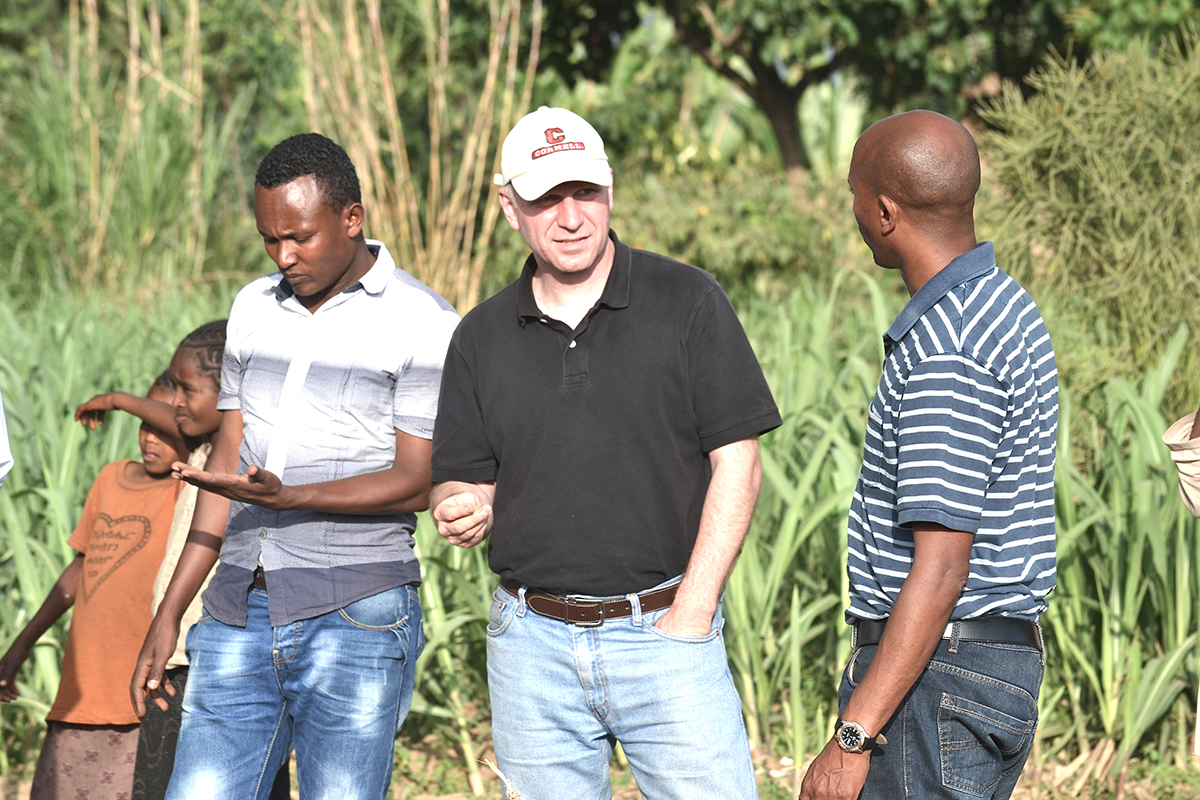'Climate-smart soils' may help balance the carbon budget
By Blaine Friedlander

Here’s the scientific dirt: Soil can help reduce global warming.
While farm soil grows the world’s food and fiber, scientists are examining ways to use it to sequester carbon and mitigate greenhouse gas emissions.
“We can substantially reduce atmospheric carbon by using soil. We have the technology now to begin employing good soil practices to reduce greenhouse gas emissions,” said Johannes Lehmann, Cornell professor of soil and crop sciences, co-author of the Perspectives piece, “Climate-smart Soils,” published in Nature, April 6.
Decreasing greenhouse gas emissions, sequestering carbon and using prudent agricultural management practices that tighten the soil-nitrogen cycle can yield enhanced soil fertility, bolster crop productivity, improve soil biodiversity, and reduce erosion, runoff and water pollution. These practices also buffer crop and pasture systems against the impacts of climate change.
Currently, Earth’s atmosphere holds about 830 petagrams (1 trillion kilograms) of carbon and humans add about 10 petagrams of carbon to the atmosphere every year, because of industrial and agricultural waste, and fossil-fuel burning vehicles, according to Lehmann. Soils, however, hold about 4,800 petagrams of carbon to a depth of 2 meters, which is six times the amount of carbon dioxide currently in the atmosphere. The good news is that soils have the potential to hold even more, said the scientists.
“Improving prediction models, finding ‘big data’ approaches to integrate land use, soil management and technology to engage land users are key parts to realizing greenhouse gas mitigation from climate-smart agricultural soils,” said Lehmann, a faculty fellow at Cornell’s Atkinson Center for a Sustainable Future.
One strong mitigation strategy includes avoiding degradation of native ecosystems, while restoring marginal land to perennial forest or grassland.
It’s not all about science: Realizing the potential for climate change mitigation through global soil management requires understanding cultural, political and socio-economic contexts, said the scientists.
Land users, farmers and producers can abate greenhouse gas emissions and sequester carbon using several methods, but these stakeholders must be educated and need the decision tools to choose the most appropriate approach tuned to their situation. Practices to minimize greenhouse gas emissions include reducing tillage; improving grazing management, crop rotation and nutrient management; applying biochar; adding cover crops; and providing perennial vegetation for inactive production fields.
“The mitigation potential of existing and future soil management practices could be as high as 8 petagrams per year, but how much is achievable depends on the implementation strategies, and socio-economic and policy constraints,” said Lehmann.
In addition to Lehmann, researchers writing the Nature piece included lead author Keith Paustian and Stephen Ogle, both of Colorado State University; David Reay, University of Edinburgh; G. Philip Robertson, Michigan State University; and Pete Smith, University of Aberdeen.
Media Contact
Get Cornell news delivered right to your inbox.
Subscribe